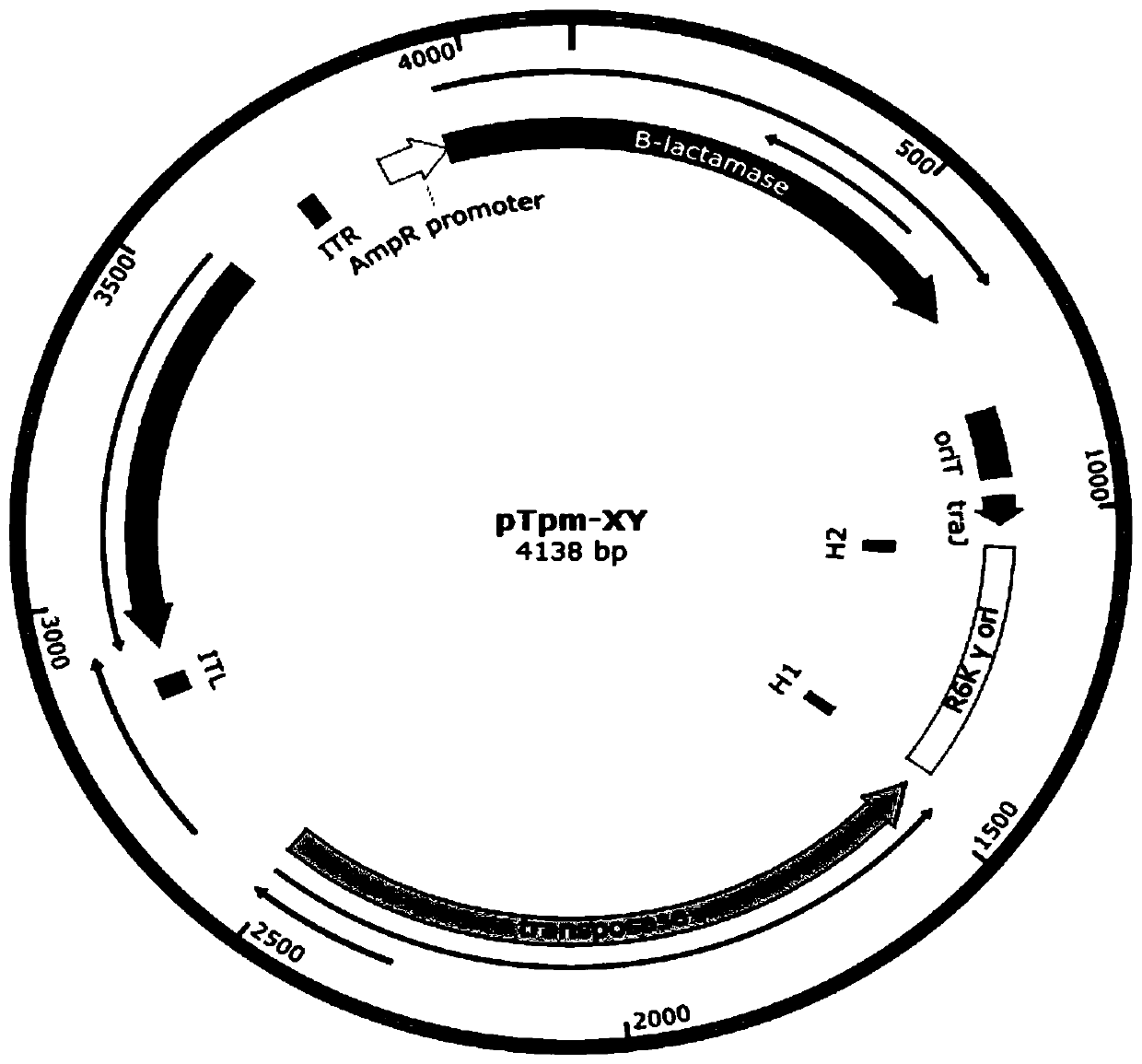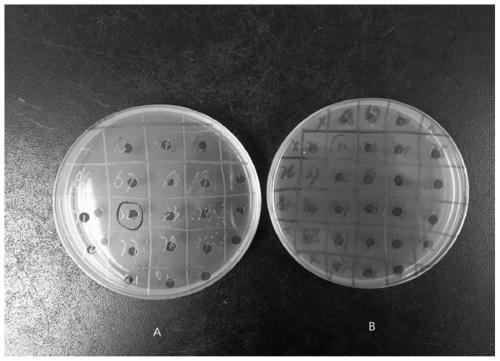Method for constructing suicide plasmid and drug-resistant mutant strain based on mariner transposon
A drug-resistant mutation and suicide-type technology, applied in the field of genetic engineering, can solve problems such as poor results, high requirements for technicians, and high cost of sequencing technology, and achieve high cost, reduced labor intensity, and heavy workload.
- Summary
- Abstract
- Description
- Claims
- Application Information
AI Technical Summary
Problems solved by technology
Method used
Image
Examples
Embodiment 1
[0072] Example 1: Screening of new genes resistant to carbapenems antibiotics based on mariner transposition mutation technology
[0073] 1. Construction of mutant strains
[0074] (1) Construction of pTPM-XY plasmid: The structure diagram of pTPM-XY plasmid is as follows figure 1 As shown, pTPM-XY plasmid consists of replicon R6k, mariner transposon, tpm R and Amp R The resistance gene and Traj are responsible for the gene composition of conjugative transfer, and its construction process is as follows:
[0075] Using the pCat-marinerr plasmid (purchased from Shanghai Jikai Gene Technology Co., Ltd.) as the parent (template), PCR amplification was carried out with primers at-F and CatR (at-F: ccagaactcatgttgcatggtat; CatR: ccaagttctgaGCCTTTTTG CG) to obtain a 3443bp amplified Amplify the product (as a plasmid backbone); then use the pUC57-tpm plasmid containing the tpm gene synthesized by Qingke Biotechnology Co., Ltd. as a template, and use primers TP M-F and TPM-R (TPM-F:...
Embodiment 2
[0126] Example 2 Construction of Mutant Library Based on Mariner Mutation Technology
[0127] In order to study whether this mutation technique can be used to construct mutation libraries of other bacterial strains, four strains of standard bacteria were selected in this embodiment: Enterobacter cloacae ATCC13047, Salmonella ATCC14028, Klebsiella pneumoniae ATCC700603, and Escherichia coli C600 (E.coli C600), All of the above were purchased from Guangzhou Chengkang Biotechnology Co., Ltd.
[0128] 1. Determination of sensitivity of experimental strains to tellurite
[0129] Streak inoculate the experimental strain on MacConkey agar medium (purchased from Guangzhou Huankai Biotechnology Co., Ltd.) for culture, and take a single colony to subculture on the next day and culture it on LB agar containing 25 μg / ml sodium tellurite (purchased from Guangzhou Huankai Biotechnology Co., Ltd.), it was found that no colonies grew on the agar plate, which proved that the above strains wer...
PUM
 Login to View More
Login to View More Abstract
Description
Claims
Application Information
 Login to View More
Login to View More - R&D
- Intellectual Property
- Life Sciences
- Materials
- Tech Scout
- Unparalleled Data Quality
- Higher Quality Content
- 60% Fewer Hallucinations
Browse by: Latest US Patents, China's latest patents, Technical Efficacy Thesaurus, Application Domain, Technology Topic, Popular Technical Reports.
© 2025 PatSnap. All rights reserved.Legal|Privacy policy|Modern Slavery Act Transparency Statement|Sitemap|About US| Contact US: help@patsnap.com



